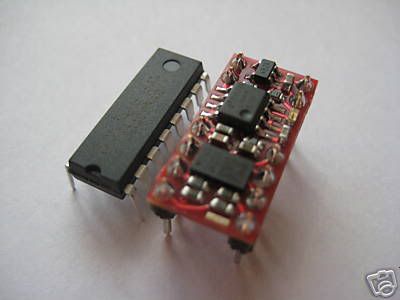Gyro

| Product Number | DC-SS010 |
| Product Name | Angular Rate Sensor XV-3500CB Gyroscope Prototype PCB |
| Operating Temperature | 0℃to+80℃ |
| Storage Temperature | -10℃ to 85℃ |
| Defection Range | -100deg/s to +100deg/s |
| Scale Factor | 0.65mV/deg/s |
Voltage output of sensor in static Typical Value | 1320mV~1380mV 1350mV |
| Dimensions | 32(mm) x 19(mm) |
| Net Weight | 10g/0.3oz |
I bought this gyro breakout board from eBay, and time will tell whether it will serve my purpose nicely. Key specs of the XV-3500cb is:
Frequency response: 200hz
Angular response: +/- 100 degrees/sec
Accelerometer

Quick features list:
- Supply voltage: 5V.
- X/Y/Z Axis analogue output voltage: 1.65V at zero g (ratiometric output).
- Audio amplifier output: 250mW into 8 ohm.
- Multiplexer control voltage 0/5V.
- 0-2kHz bandwidth (can be limited by adding external capacitance to analogue axis output).
- Module uses standard 0.1" pitch DIP pin spacing and is breadboard/stripboard friendly for fast prototyping without special tools.
- The module dimensions are approximately 10mm x 20mm.
- Acceleration range +/-2g.
- On-board stable 3V3 supply for sensor.
- No external components required for most applications.
- Power 'ON' LED